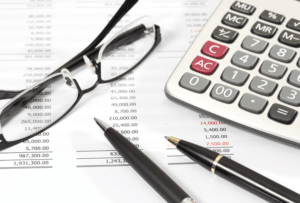The careful calibration of amortization charges, therefore, plays a pivotal role. It ensures that the company’s financial state is represented as accurately as possible, reflecting true earnings and asset values. An informed and strategic approach to patent amortization can make a significant difference in financial reporting and, by extension, in the strategic decisions that are informed by those financial reports. If you like, you can simply deduct the entirety of the expenses from that year’s taxes as a business expense.

Warranty Expense Accounting for Financial Professionals
- Although the question of whether an asset’s useful life is definite or indefinite may seem straightforward, certain intangibles—particularly those that are a result of contracted or other legally set terms—are difficult to judge.
- She then amortizes the asset over 10 years, which calls for an annual journal entry in which the Amortization Expense account is debited for $12,000, while the Accumulated Amortization account is credited for $12,000.
- It would be a Sec. 195 start-up cost, capitalized and amortized over 15 years.
- When capitalizing patent costs, companies must adhere to criteria outlined by accounting standards like the Generally Accepted Accounting Principles (GAAP) and International Financial Reporting Standards (IFRS).
This method can provide a benchmark, but it requires a robust database of comparable transactions, which may not always be available. Changes in market conditions, technological advancements, or shifts in the competitive landscape can impact the expected useful life of a patent. For instance, if a new technology renders a patented invention obsolete, the remaining unamortized cost may need to be expensed immediately. This ensures that the financial statements remain relevant and reflective of the current economic realities. A patent is taken into account as an intangible asset because a patent doesn’t have bodily substance and supplies long-term worth to the owning entity. For example, imagine that your small enterprise acquires an organization with property with an actual worth of $100,000 and liabilities totaling $50,000.
Depreciation for Patents
This includes the terms and conditions related to the pledged patents and any restrictions on their use or transfer. We can make the journal entry for the patent by debiting the patent amortization cost of acquiring the patent into the patents account and crediting the same amount to the cash account. According to Sec. 178, lease acquisition costs are amortized over the term of the lease; in certain circumstances, this includes extensions. In application, the prices of acquiring a patent could be so small that they don’t meet or exceed an organization’s capitalization restriction.
- Because the duration of the employment contract can be estimated with reasonable accuracy (four years), the signing bonus would be amortized over that period.
- If R&D prices are expensed until future financial advantages are possible, then future prices are capitalized (added to the intangible asset – patent account) and amortized.
- When you record patent expenses and amortization costs, you must record the number in both the patent amortization expense account ledger and the patent asset account ledger.
- These regulations, commonly called the “INDOPCO regulations,” are effective for intangible asset costs paid or incurred after 2003.
- These can be leveraged to a company’s benefit, potentially leading to significant tax savings across the patent’s life.
- This method is straightforward but may not fully capture the patent’s potential to generate future economic benefits.
- For this reason, internally generated brands, mastheads, publishing titles, customer lists and similar items are not recognised as intangible assets.
Importance of Amortization of Intangible Assets for Business
If no method is determinable, then the asset must be amortized AI in Accounting on a straight-line basis. Under U.S. GAAP SFAS 142, goodwill is not amortized but is tested annually for impairment Goodwill impairment for each reporting unit should be tested in a two-step process at least once a year. There are, however, a few catches that companies need to keep in mind with goodwill amortization. For instance, businesses must check for goodwill impairment, which can be triggered by both internal and external factors. The goodwill impairment test is an annual test performed to weed out worthless goodwill.
- She has more than 10 years of combined experience in auditing, accounting, financial analysis and business writing.
- This includes acquired goodwill, as opposed to self-created goodwill, which is not amortizable.
- These fees also include costs for responding to office actions, conducting patentability searches, and making necessary amendments to the application.
- Generally, costs that provide future economic benefits are capitalized, while those that do not are expensed immediately.
- There are several steps to follow when calculating amortization for intangible assets.
- In line with the guidelines, revenue-based amortization aims to amortize the intangible in accordance with its contributions to the revenue.
What are the different amortization methods?
On the income statement, typically within the “depreciation and amortization” line item, will be the amount of an amortization expense write-off. IRS Publication 535 Business Expenses has more definitions of the types of intangible assets listed above and details on which intangible assets you can and can’t amortize. Once our amortization schedule is filled out, we can link directly back to our intangible assets roll-forward. In the prior section, we went over intangible assets with definite useful lives, which should be amortized. The deciding factor on whether a line item gets capitalized as an asset or immediately expensed as incurred is the useful life of petty cash the asset, which refers to the estimated timing of the asset’s benefits.

Factors that Determine the Life of an Intangible Asset

The choice between capitalizing and expensing patent costs also carries significant tax implications, influencing a company’s tax liability and cash flow. When patent costs are capitalized, they are treated as intangible assets for tax purposes, allowing businesses to amortize these costs over a 15-year period under Section 197 of the Internal Revenue Code. This amortization provides a steady tax deduction, which can help reduce taxable income consistently over time. For companies with substantial patent portfolios, this can result in considerable tax savings and improved cash flow management. Patents are recorded as intangible assets on a company’s balance sheet when acquired or developed.
